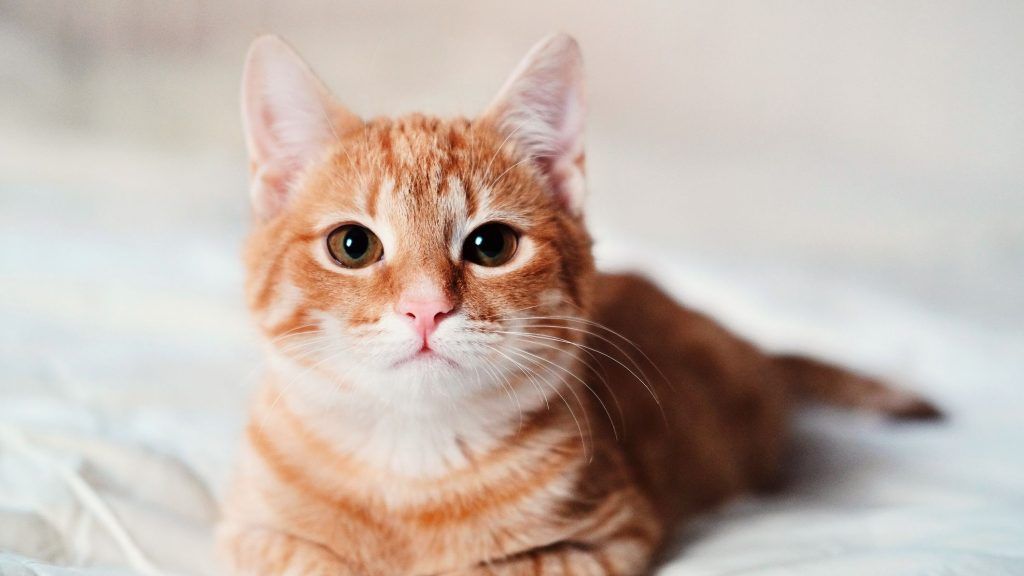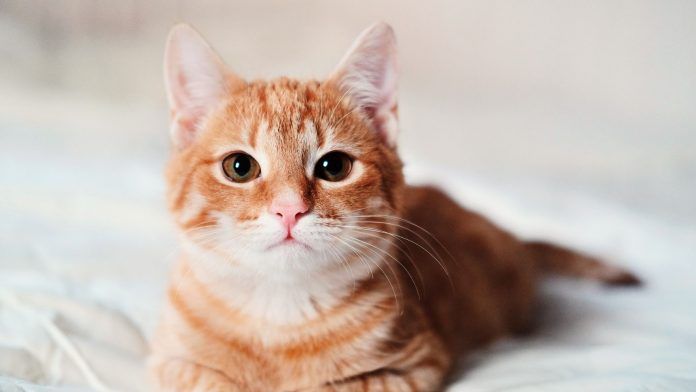Understanding cats’ specific nutritional requirements is key to making sound diet choices. As obligate carnivores, cats thrive best on high-protein, meat-based diets. However, cat owners’ curiosity about unconventional human foods like celery prompts questions.
Can celery’s veggie crunch benefit cats? This article delves into the science and debate surrounding cats and vegetables like celery. While cats lack evolutionary adaptations to derive nutrition from plant foods, small amounts of produce like celery may be tolerated as supplemental treats by some cats. By better comprehending cats’ digestive capabilities, owners can make informed decisions.
2. Investigating Celery as a Potential Cat Food
Celery is an aromatic marshland plant consumed worldwide by humans for its crunchy texture and mild flavor. Its nutritional composition features water, fiber, vitamin K, folate and traces of other micronutrients. However, celery holds limited relevance in meeting cats’ nutritional requirements as obligate carnivores.
The high water and fiber content of celery could tax cats’ short digestive tracts. Celery’s main value for humans comes from its low calorie profile – an irrelevant factor for high-metabolism cats requiring calorie-dense diets. When considering celery for cats, its compositional fit and potential risks warrant evaluation.
3. Cats’ Digestive System and Vegetables
Cats’ quick, simple digestive tracts reflect generations thriving on animal prey diets. Their short intestinal tract rapidly absorbs essential amino acids from meat before elimination. Cats lack adaptations for efficiently digesting the cellulose, fibers and carbohydrates abundant in plant-based foods.
While tiny portions of produce may be stomached by some cats, large quantities of vegetables and greens overwhelm cats’ limited capacity to breakdown and assimilate these foods. Monitoring litter box habits after offering vegetables checks for proper digestion. Understanding intestinal limitations helps owners assess when to avoid novel foods like celery.

4. The Safety Factor: Is Celery Safe for Cats?
Various factors determine celery’s safety for cats. On the hazardous end, celery can present a choking risk for cats given its fibrous, string-like texture. The crunchy vegetable may splinter and damage the subtle feline esophagus when chewed or swallowed. Additionally, pesticides and chemicals used in celery cultivation may cause toxicity when concentrated in cats’ smaller bodies.
Celery alone also provides inadequate nutrition for meeting cats’ dietary requirements. However, when introduced properly in tiny amounts, most cats suffer no harm from infrequent celery treats. Still, veterinary guidance is advisable before incorporating any new human foods.
5. Nutritional Value of Celery for Cats
For humans, celery provides traces of vitamins A, K, and C, plus minerals like folate and potassium. However, cats require concentrated forms of nutrients like Vitamin A and other B complex vitamins only found in meat sources.
The small amounts of micronutrients in celery hold little relevance to balancing cats’ dietary needs. Cats’ bodies are also inefficient at converting plant carotenoids into usable vitamin A. While celery holds some nutritional merits for humans, it fails to deliver meaningful nutritional value for cats better served by quality cat foods or occasional treats like meat or fish.
6. Incorporating Celery into Cat Diets
Some cat owners wish to creatively integrate modest amounts of celery into cat meal plans. Options include:
- Tiny pieces of celery mixed into wet food as flavor accents.
- Celery powder spice sprinkled on top of meals.
- Celery broth added to homemade raw diets.
- Pureed celery pieces incorporated into wholesome cat muffins or food popsicles.
When included in moderation under 10% of diet, these methods can potentially provide cats supplemental exposure to new flavors and textures, provided their digestive health is monitored and meat proteins remain primary in their diet.
7. Celery as a Treat: Pros and Cons
Can celery function as a nutritious treat for cats? The allure lies in its low calorie profile versus high-fat treats that promote obesity. Celery’s crunch also cleanses cat’s teeth. However, its limited nutritional value for cats makes celery a fruitless treat choice compared to high-protein options like baked chicken, fish or liver.
There is also the risk of choking on fibrous celery pieces. Overall, cat owners would be better served providing exciting, low-fat animal protein treats that actually meet cats’ dietary needs.
8. Cat Reactions to Celery: What to Expect
Given celery’s novelty as food for cats, their reactions vary greatly based on individual taste, texture and scent preferences. Some cats may exhibit immediate interest and eagerly consume offered celery pieces. More often, cats show indifference or aversion to celery’s unfamiliar crunch and bitter compounds.
Even cats fascinated by stealing human table scraps may sniff celery and walk away. Other cats may play with and paw at celery but refuse to ingest it. Starting with tiny celery amounts allows gauging cats’ preferences. Forcing celery on reluctant cats causes unnecessary stress.
9. Preparing Celery for Cats: Cooking or Raw?
Raw celery poses a greater choking hazard to cats given its intact stringy fibers. Light cooking through steaming or boiling helps soften celery without nutrients loss during preparation for cats. Cooking also helps reduce choking risks and aids digestibility.
Steaming celery briefly leaves it with some crunch but easier to mash or chop into bite-size portions. Owners can puree cooked celery pieces into a thin liquid added to meals. Grinding it into powder makes an easy sprinkle supplement. Proper cooking and processing lets owners safely maximize celery’s limited benefits.
10. Other Vegetables for Cats to Consider
In addition to celery, cucumber, zucchini, pumpkins and peas contain comparable nutritional benefits with low risk for cats in tiny amounts. Spinach and broccoli boast vitamins, but excess hinders calcium absorption.
Starchy veggies like corn and potatoes offer little health value. Garlic and onions are toxic. While no vegetables provide complete nutrition, small samplings may satisfy some cats’ tastes and diversify their diet experience. Always introduce new veggies individually and watch for signals of intolerance. Moderation with monitoring helps prevent nutritional or digestive issues.
11. Balancing Nutritional Intake: Protein vs. Vegetables
While limited vegetation can supplement feline diets, meat proteins must remain the bulk of cat nutrition. At minimum, cats require 25-30% protein in their diet. Vegetables alone are insufficient. When incorporating vegetable treats or meal additions, ensure the cat’s overall weekly protein intake stays optimal.
For homemade recipes, consult veterinarians to balance meat, organ meat, bone and supplements like taurine to avoid nutritional deficits from replacing meat with celery or other vegetables. Keeping protein intake ideal ensures cats thrive even with modest plant matter.
12. Consulting a Veterinarian: Expert Opinion
Before introducing new foods like celery, consult your cat’s veterinarian to tailor any dietary changes to your cat’s life stage and health status. Key questions to ask include:
- Would celery consumption benefit or negatively impact my cat based on their health profile?
- What portion frequency and serving size of celery is suitable for my cat?
- How can I safely introduce and monitor celery’s effects?
- What alternative treats better align with my cat’s needs?
A veterinarian can guide owners wishing to explore novel additions like celery while prioritizing the cat’s wellbeing.
13. Homemade vs. Commercial Cat Food
Both commercial cat foods and thoughtfully balanced homemade diets can meet cats’ needs. Commercial foods provide optimal nutrition conveniently with veterinary supervision. Meanwhile, homemade meals allow owners to control ingredients, but require careful formulation to add taurine and nutrients absent from limited ingredients like celery.
From a celery standpoint, commercial kibbles enable trace additions through dehydrated celery flakes without unbalancing nutrition. For homemade recipes, vets must approve any celery amounts in context of other diet components. Either approach can work with guidance.
14. The Evolution of Cats and Dietary Adaptations
Unlike their larger wildcat relatives who ate some vegetation via prey’s stomach contents, domestic cats evolved predominately eating small game mammals to thrive on animal flesh diets. Their digestive systems reflect generations as carnivores.
While modern knowledge expands perceived options like vegetables, cats lack adaptations to derive full nutrition from non-meat foods. From an evolutionary standpoint, only moderate dietary additions align with cats’ true dietary niche. Too drastic a departure risks health consequences.
15. Common Misconceptions about Cats and Celery
Misunderstandings surround celery’s role in feline diets, including inaccurate claims like:
- Myth: Celery’s fiber improves cat digestion. Fact: Excess fiber overwhelms cats.
- Myth: Celery provides needed vitamins for cats. Fact: Cats require concentrated nutrition from meat.
- Myth: Cats can safely eat large amounts of celery. Fact: Celery provides negligible benefits and poses risks.
- Myth: Celery is a healthy treat for cats. Fact: Meat treats better serve feline health.
Getting sound information is vital to avoid unsafe nutrition decisions for cats.
16. Cats’ Hydration Needs and Vegetable Intake
Celery’s high water content may seem to assist cat hydration, however cats evolved deriving sufficient fluids from prey. Excess fluid can also tax kidneys. Still, the crunch of veggies like celery may promote chewing and saliva production to help lubricate cats’ mouths between sips of water.
Adding small pieces of celery or other fresh veggies to meals can encourage overall water intake in moderation. Monitoring urine dilution and litter box habits identifies proper hydration levels.
17. Monitoring Health and Dietary Changes
When transitioning to any new food, vigilance for health impacts is important. Owners should watch for subtle changes in appetite, energy, weight, water intake, coat quality, sociability and litter box habits that could indicate an adverse reaction to celery or improper nutrition.
Routine veterinary checkups to assess organ function and bloodwork help identify early deficiencies or toxicity. Being attuned to shifts from baseline habits allows timely intervention if nutrition adjustments become necessary. Gradual transitions with diligent monitoring help ensure cats thrive.
18. Summary: Celery in the Feline Diet
In summary, current evidence indicates celery provides negligible benefits but some risks to cats if given irresponsibly. Tiny amounts may be stomached by some cats, but improper size or frequency can create dangerous choking and nutritional imbalance.
While crunchy and hydrating for humans, celery’s composition makes it largely irrelevant to meeting cats’ dietary requirements as obligate carnivores. Providing optimal cat nutrition through quality meat-based commercial or homemade diets remains essential, regardless of novel additions like celery given only occasionally in modest volumes with veterinary guidance.
As cat caretakers, we want to enrich our cats’ lives, including providing exciting new flavors. But we must balance this desire with responsible nutrition aligned to cats’ physiology. While curiosity exists about unconventional plant-based options like celery, science shows cats’ resilient health depends on high-protein animal-based diets with only minimal vegetable integration.
By respecting cats’ evolutionary diet, consulting experts and observing individual reactions, cat owners can thoughtfully navigate novel additions to their feline friend’s menus. In the end, upholding our cats’ wellbeing must guide all dietary decisions.


cialis effect on blood pressure
cialis effect on blood pressure